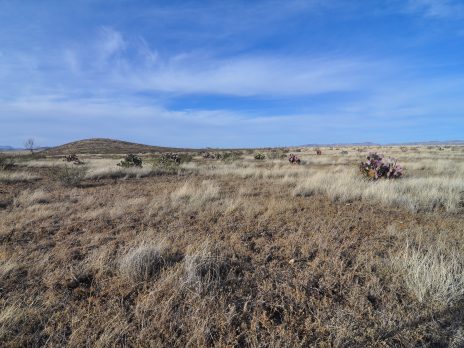Wind Erosion Mitigation and Dryland Restoration
Purpose: Persistent drought has spanned nearly three decades across the Southwestern United States, posing a significant challenge to native perennial plants, particularly in desert ecosystems. These arid landscapes occupy approximately one-third of Arizona’s territory. Historically, these resilient desert regions have adapted to their harsh environment over millennia. However, the ongoing drought, combined with desertification, presents a significant threat. Desertification, the perpetual cycle of degradation of arid and semi-arid land due to climate variations and human activities, has severe socio-economic and environmental consequences. Prolonged droughts, soil erosion, and human interventions are the primary drivers of this phenomenon. One concerning consequence is the migration of sand dunes, a result of wind-driven soil erosion.
To combat desertification, particularly wind-driven soil erosion, we propose to construct wind erosion structures through revegetation. The primary goal of this project is to restore drylands using native vegetation, which will help stabilize soil structures and combat soil erosion. Our approach will use a variety of native grasses and forbs found in northern Arizona, with a particular focus on lands within the Navajo Nation. By creating and developing wind barriers constructed from a combination of native grasses and slender wooden boards for short-term and long-term stabilization. These barriers will help stabilize areas prone to wind erosion, particularly during droughts or periods of high winds.

Funding: National Science Foundation (22-506, Award #2216704)
Plant Species:
- Sporobolus airoides (Alkali Sacaton)
- Sporobolus cryptandrus (Sand Dropseed)
- Sporobolus contractus (Spike Dropseed)
- Muhlenbergia pungens (Sandhill Muhly)
- Achnatherum hymenoides (Ricegrass)
- Bouteloua gracilis (Blue Grama)
- Thelesperma subnudum (Navajo Tea)
- Linum lewisii (Lewis Flax)
- Artemisia frigida (Prairie Sagewort)
Collaborators:
Navajo Nation Department of Fish and WIldlife
Southwest Experimental Garden Array
North Leupp Family Farms
Diné Native Plants Program
Participants:
Amber Renee Archie, Research Fellow, RaMP
Audrey Harvey, Ph.D. Student, Biological Sciences
Karen Haubensak, Assistant Research Professor, Biology